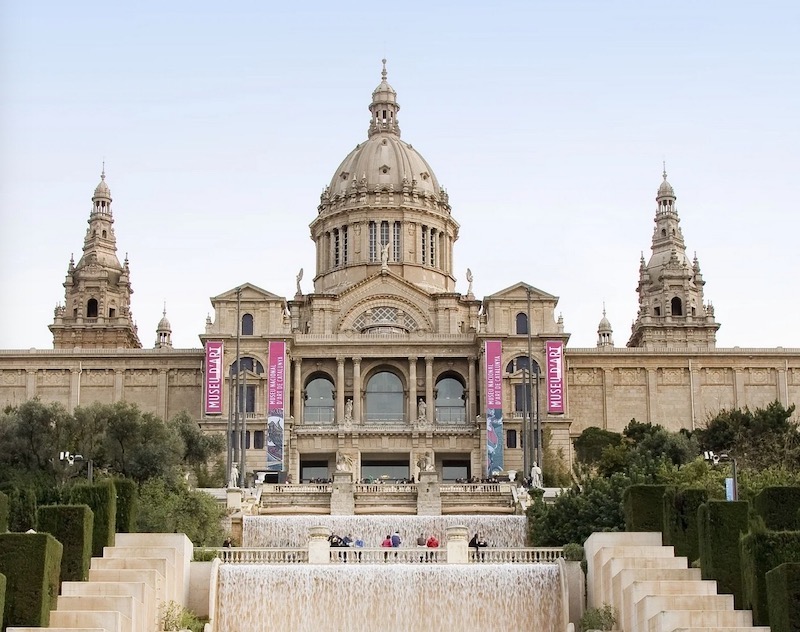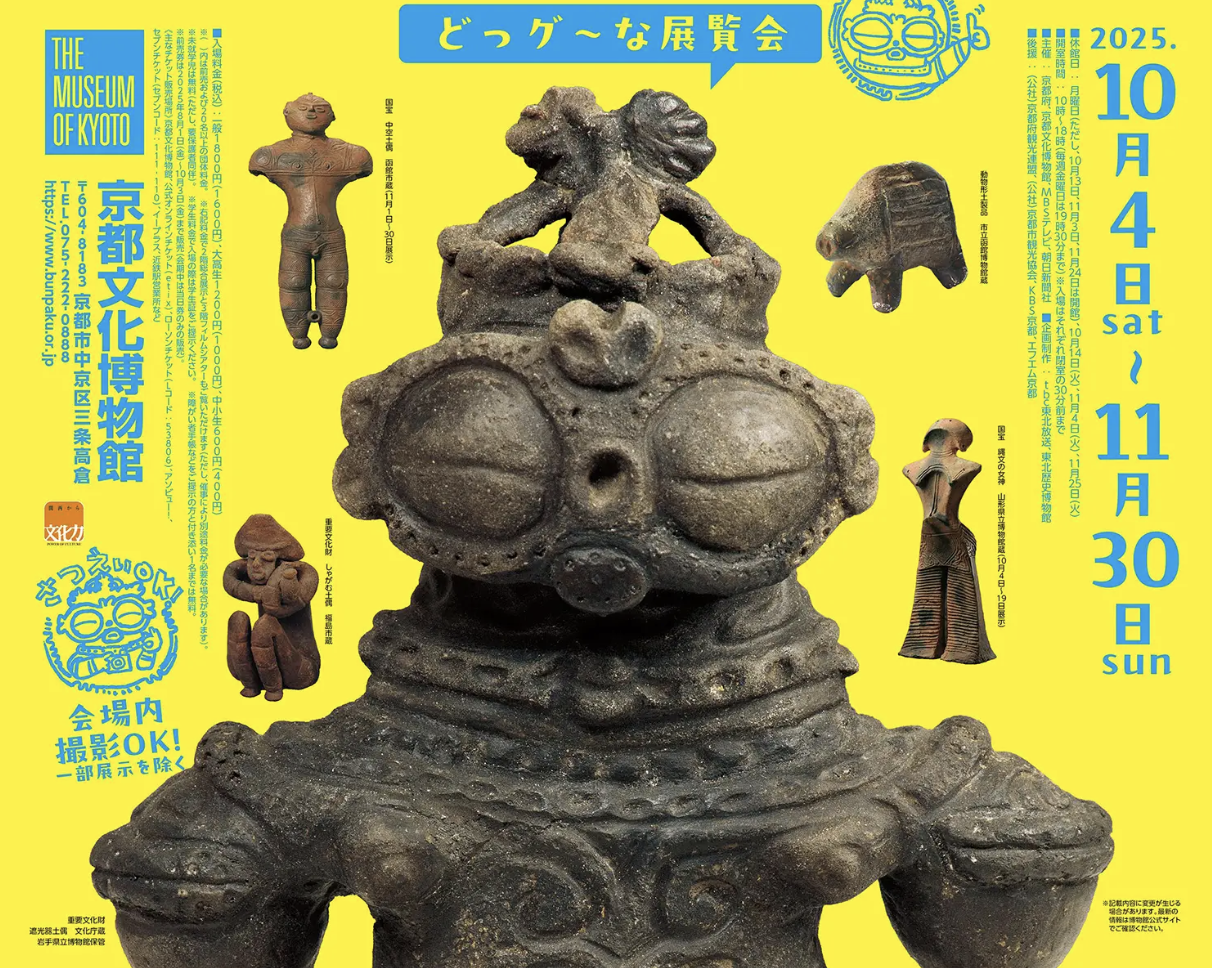
The Museum of Catalan Art in Barcelona, Spain, located on Montjuïc Hill, is famous for its outstanding collection of Romanesque church paintings and Catalan art from the late 19th and early 20th centuries.
Recently, the museum's director Pepe Serra accepted an exclusive interview with The Paper while attending the "M20+ Global Top Museum Conference" in Shanghai. He talked about the museum's collection focus, the relationship between a tourist city and museums, and how they face globalization and digitalization.
The National Art Museum of Catalonia (MNAC) is located on Montjuïc Hill, and from the museum, you can see the whole city. To understand the history of Barcelona and Catalonia, you need to go to the National Art Museum of Catalonia, which is located there. The exhibition halls in the museum tell the art and culture from the Roman era to the 20th century. The museum was built in the 19th century. In 1880, an archaeological museum was established in the Cathedral of Santa Ágata; then in 1934, at the initiative of the first director of the museum, Joaquim Folqui Torres, all the Catalan art collections were moved to the National Palace (Palau Nacional) - this building was built on the occasion of the 1929 World Expo. Its eclectic architectural style combines many different cultures: a large dome facade, two domes on both sides and four small towers.

National Art Museum of Catalonia, Spain

Exhibition hall of the National Art Museum of Catalonia
With an important collection of Romanesque frescoes, the Romanesque collection is one of the most important in the museum. In fact, the collection is unmatched by any other museum, with many works dating from the 11th to the 13th century, originally decorating rural churches in the Pyrenees and other places in old Catalonia. From the late 1980s, the museum was involved in a huge reorganization project, bringing together the collections of the Museum of Art of Catalonia and the Museum of Modern Art. In addition, the museum has also collected many paintings from foreign academies in solemn churches and monasteries, providing visitors with a wider historical artistic comparison.

Exhibition hall of the National Art Museum of Catalonia

Pepe Serra
Dialogue|Pepe Serra
The Paper: It is said that the area where the National Art Museum of Catalonia is currently located was the National Palace used during past World Expos. Could you first tell us about the museum's architectural overview and development history?
Pepe Serra: The National Art Museum of Catalonia is located in the National Palace building, which was built in 1929 to host an international event on energy. Five years later, in 1934, the government decided to house the National Art Museum in this building. Since then, this building has been the first home of the museum. Now, opposite the museum, we are remodeling a second building to have more space to display our collection and host special exhibitions in the future.

The National Art Museum of Catalonia (left) and the new extension building (right)
The Paper: How many pieces of art are currently in the museum? What are the categories?
Pepe Serra: The collection of the National Art Museum of Catalonia is growing very fast. At present, the number of collections in the museum is about 500,000, and it covers a wide range. The museum has a very strong Romanesque collection and a medieval collection, which are our two most important collections. We also have a very strong Art Nouveau collection, as well as a collection of paintings, including Renaissance and Baroque styles, and a large collection of photography. This is the main part of our collection. In addition, we are now collecting contemporary art works, and the number of collections in this category is also increasing.

Exhibition hall of the National Art Museum of Catalonia

Pietro Urbano, Augustus, 1515-1525
The Paper: The Romanesque collection is the most important collection in the National Art Museum of Catalonia. It is said that many of the collections come from rural churches in the Pyrenees and other churches in old Catalonia. Can you talk about the history of the collection, especially Romanesque art?
Pepe Serra: Of course, the different types of collections in the museum have different origins. Let’s start with the Romanesque collection, which is Romanesque paintings. These collections were collected when the museum was first established. These paintings were originally in churches in Catalonia and began to be discovered and studied in the early 20th century, especially after the Catalan Institute’s expedition to the Pyrenees in 1907. In the early 1920s, an American art dealer bought many frescoes in the former monastery of Murbourg, intending to sell them at a high price. The dealer invited two Italian art restorers to dismantle the frescoes, which were eventually sent to the United States and are now in the collection of the Boston Museum of Fine Arts. Since there is no law in Spain prohibiting the transfer and export of artworks, the export of frescoes has aroused the vigilance of local governments. In order to prevent these precious works from being lost overseas, many church frescoes in rural churches in the Pyrenees were dismantled and purchased by the museum from the churches. In the end, this batch of works became the origin of the museum’s collection.

The 19th century Church of Sant'Agata, where the museum's collections were originally gathered

The mural depicting the conquest of Mallorca comes from the Caldes family's ancestral home on Carrer Montcada in Barcelona.

Mural of the Conquest of Mallorca (detail)
As for other collections in the museum, such as art from the Renaissance and Baroque periods, they are donations from private collectors in society, who have been donating their collections to the museum a long time ago.
In addition, some of the collections are purchased by the museum, which are more modern. Our staff will also go around the city to collect distinctive wooden doors and windows. Even if these things are damaged, we will collect them because these items can more or less represent the corresponding historical period. Many people are very shocked when they see these exhibits.

Anonymous, "Annunciation with Angel on Bride's Chest", 1530-1535

Furniture objects presented in museums

Collection Photography
The Paper: What are the characteristics of these medieval Romanesque collections?
Pepe Serra: All the medieval collections are not Spanish art, but Catalan art. These medieval collections are the most important collections we have, the most important and largest collection of Romanesque art in the world. As I said, we got them from churches. They are not much different from the Romanesque collections in Italy and the Romanesque collections in southern France.
Romanesque is a European style that appeared in the 11th and 12th centuries, when the countries we now call did not exist. At that time, a group of European artists traveled around, collected fees and left their works in different places. Therefore, Romanesque was a popular art style in Europe at that time, and it was a very European art.

Bartolomé Bermejo, Christ in Heaven, c. 1475

The Baptism of Christ Triptych, 1500-1520
The Paper: What progress has the museum made in protecting cultural heritage at present?
Pepe Serra: We have been protecting the artworks in our collection. However, we feel that it is not very meaningful to restore some paintings to their past appearance. Instead, we choose to protect their current appearance to create a connection in time. Maybe the audience will feel sad when they see the damaged paintings, but this is also what we want to convey.
In the current progress, what we are doing may not be the latest and most cutting-edge progress, but this is also our practice in the past two years: with the help of new science and technology, we can study cultural relics without touching them, and we can have a deeper understanding of cultural relics through some new tools and equipment. This kind of scientific and technological means also enables curators and researchers to have new interpretations of cultural relics.

Using technology to understand cultural relics
The Paper: In addition to the protection and interpretation of cultural heritage, the M20 Forum held by the Shanghai Museum also focused on the two themes of digitalization and globalization. Could you please talk about how museums cope with digitalization and globalization?
Pepe Serra: In my opinion, globalization is a trend that we cannot avoid. It is happening and we cannot fight against it. What we have to do here is to always maintain the uniqueness of the museum. Every museum is different, and this is very important.
So I think museums have two things to do: one is to talk about the location of the museum, that is, the relationship with the local place; the second is to let the public see the world through museums that are rooted in the local area. We can't limit ourselves to localization, but we must maintain the uniqueness of the museum, because globalization will eventually make everything similar. Because this has already happened in cities and shops.

The application of digitization in museums
Regarding the issue of digitization, I think that digitization is no longer a controversial point at the moment, but a crucial point. Digitization can make more exhibits and more content accessible to more people. At the same time, digitization also provides a great opportunity to interpret, explain or reconstruct works of art. Of course, I always think that seeing some works in person is the best art experience. Digitalization cannot replace this offline experience, but digitization and technology can help us see many details and content that cannot be seen by the naked eye.

Pepe Serra, Director of the National Art Museum of Catalonia, gave a speech at the Shanghai Museum
The Paper: In your forum speech, you talked about the characteristics of Barcelona as a tourist city and the size of its population. How do you view the relationship between museums and this unique city and tourists from all over the world?
Pepe Serra: This is one of the main challenges facing the museum. Barcelona is not the metropolis that everyone imagines, and its popularity comes from the success of tourism. Barcelona is actually a small city, with only 500,000 people. Tourism here is very popular, but we are losing the balance between locals and tourism.
Well, as a museum in Barcelona, how to balance the local audience and the global (tourist) audience is the most important challenge we are facing now. As the curator, I have to balance the needs of local audiences and tourists. Because a museum cannot be just a cube that only contains books and works, but it must be open to everyone. Now, I think such a balance is difficult to achieve because there are too many tourists. We can't just regard the museum as a tourist attraction, it must also be rooted in the local community and the local residents. We are thinking about how to let everyone see something in the museum that they can't see elsewhere, see something they don't know, which requires some differentiation. Therefore, we need to connect with different groups such as local communities, tourists, and students.

Visitors in the museum
The Paper: In terms of exhibition planning, what are the characteristics of the National Art Museum of Catalonia?
Pepe Serra: We hope to provide a good visual experience to the audience through the museum and establish a closer connection with them. We will also invite some artists to plan and do some modern art and contemporary art planning. Only 15% of our planning team are local, and the rest are from other places. The composition of the audience is also like this. It doesn’t matter, whether you are from Spain, the United States, China, or Japan, we hope to present and share with the audience. At present, one of the themes we focus on is about women and domestic violence. This is a relatively large theme in Barcelona. There are local organizations to solve these problems, and the museum uses the display of artworks to tell good stories.

Modern and Contemporary Art from the Museum’s Collection, Andrés Fernández Cuervo, The Bombing, 1937

Current museum exhibition, Eveli Torent's work
At present, no one can work alone. When we do a project or an exhibition, we need not only creators, but also more professionals engaged in text creation, music creation, etc. Teamwork is very important. I think the most important thing is the public. Therefore, visitors are at the center, and we must provide content that every audience can understand and participate in. Therefore, the job of a museum is not to translate a book into text, but to be able to use images and artistic texts to inspire viewers to read. The viewer's thinking may be more questions than answers. As a curator, my job is precisely to ensure that the final result is what the audience wants, rather than presenting it for a small group of professionals. This is the most important point.


